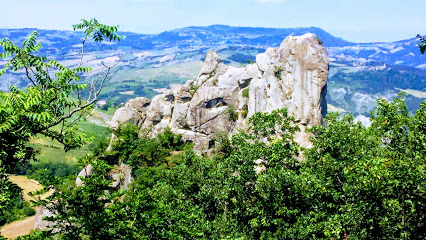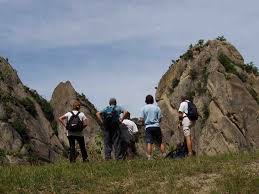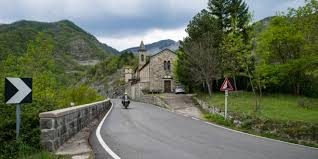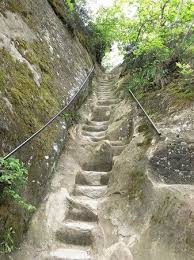Just next to the plain, on the right side of the Panaro River Valley. It is characterized by three amazing rock peaks, historically called "pebbles", the nesting site of the falcon.
Within the park, an area of 1198 hectares was designated as a community interest site and a special protection zone called Sisi de Rocamalena and St. Andrea
Constituent measures
Regional Law 2 April 1988, n. 11
province
The area of the protected area is 2300.17 hectares, of which 143 are publicly owned (Demanio, Guiglia, Marano sul Panaro and Union Park) and the rest are privately owned.
The nature of the reserve is typical of clay grooves in Prebeni alternating with gentle hills covered with pastures, dense chestnut groves, vineyards and orchards. In sharp contrast to the general landscape, three sandstone peaks emerge in the heart of the garden, derived from more resistant layers of corrosion resulting from the lack of citrus. Due to its high altitude in the landscape, the towers were used as elements of a fortification system around the Pieve di Trebbio area, where there is evidence of Etruscan-era settlements.
The height ranges from 169 to 621 m.
The land is spread with rural villages and ancient medieval fortifications.
structure
The sandstone of Sasi towers consists of very large granules, which can be distinguished even by the naked eye. You can observe the light-gray quartz with a hidden glass appearance sometimes by algae and lichens. During the late Cretaceous period (about 90 million years), these stones stabilized deep in the sea, near the Ligurian seabed, hence the name Liguridi.
Municipalities
The park is located within the territory of the towns of Castelvetro di Modena, Guiglia, Marano sul Panaro, Savignano sul Panaro, Vignola and Zocca.
Plant
A recent census confirmed the presence of 767 species, distributed among 88 families between the compound and the limenos and grass and these 48 protected species, including 26 species of orchids. Banaro River plants are strongly influenced by human activity, which occupied most of its territory with vineyards and fruit trees. Chestnut, in the past that has been cultivated, has spread in some areas to include spontaneous wood consisting of trumpet, Turkish oak, soft oak, and maple. In wooded areas most exposed to the south and then to a warm, dry climate, the wood is mainly made of soft oak, maple, ash, black horn and local rowan, with a bold growth of juniper, hawthorn and granilo.
The "stones" form a particular environment, with significant climatic differences between regions with different exposures. On the bare walls are shrubs (broom, juniper, helixrism and Heather tree) and some trees cling to the rock (oak, ash, chestnut). Where there is a minimum amount of land, there are herbs, woodpecker, thyme, saffronaria, wild cloves and some types of orchids.
the animals
The zoo is a special area for the protection of wildlife; among the protected animals we can mention: the Lobster River, the Lucanus Neck, the Geotritone, the Alpine Newtine, the Newt Crested and various types of frogs for the amphibious pavilion. The vertical walls of the "gravel" are the nesting sites of valuable prey birds such as the Severe Falcon and Stryll. Other birds of prey in the park are Poiana, Sparviere and Falco Pecchiaiolo; it is not uncommon to pass Astore nesting at higher altitudes. In cultivated fields, Lodolaio can be seen flying, insect hunter and small birds, while there are red woodpecker in wooded areas. The other birds where sandstone stones are repeated are Corfu Imperial, Woodpecker on the Wall (regular winter visitor in autumn / winter), Rhondine Montana and Takola, a corvid. In the attractive areas of the park are Calandro, Zigulo Nero and Strebazolina. In September, it is possible to detect migratory birds that depend on rocks or in cultivated fields, such as Grillaio, while during the cold season they fill forest species such as Frosone and Lucherino. Among the mammals there are small rodents such as Squirrel, Falcons, Muscardino, Predators such as Fox, Badger, Wesel, Fina, and Puzzola. Common are noble deer, roe deer, pig, and rarest deer. The presence of the wolf is increasingly frequent. Among the reptiles, note the presence of Colubro di Aesculapio, while Biacco, Natrice dal collare and Orbettino are more common. The common snake has also been reported in the past.









